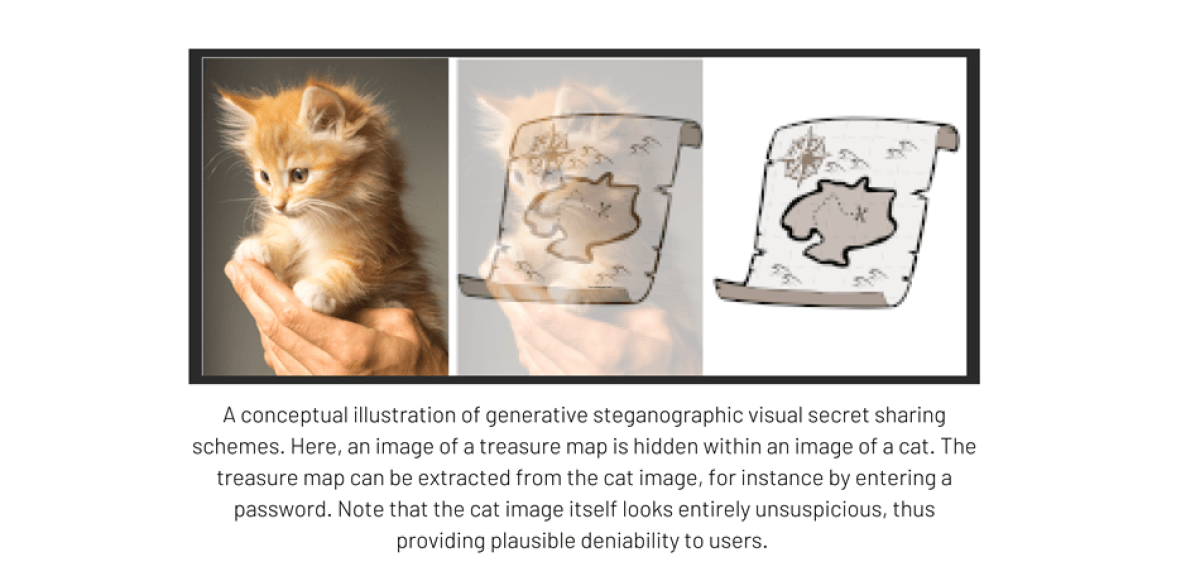OXFORD, United Kingdom — A computer program that makes it virtually impossible to eavesdrop on hidden messages is now a reality, thanks to an international team of scientists. It opens the door to perfectly secure digital communications, combating terrorism and organized crime. The algorithm can embed information in photographs and even music, concealing content in a way that hackers cannot detect.
Researchers from the University of Oxford and Carnegie Mellon University say it may become a popular feature on social media and private messaging platforms, helping vulnerable individuals such as dissidents, investigative journalists, and aid workers. The team employed a technique called steganography, the electronic equivalent of invisible ink. An example would be a Shakespeare poem being placed inside an image of a cat.
“Our method can be applied to any software that automatically generates content, for instance probabilistic video filters, or meme generators. This could be very valuable, for instance, for journalists and aid workers in countries where the act of encryption is illegal. However, users still need to exercise precaution as any encryption technique may be vulnerable to side-channel attacks such as detecting a steganography app on the user’s phone,” says co-lead author Dr. Christian Schroeder de Witt from Oxford in a university release.

Data breaches impact nearly a billion people every year
AI-generated content is increasingly becoming part of ordinary human communications, fueled by products such as ChatGPT, Snapchat AI-stickers, and TikTok video filters. As a result, steganography may become more widespread as its presence will cease to arouse suspicion.
Communication breaches can be disastrous on multiple levels, from causing irreversible reputational damage to a business to putting lives at risk. In 2021, private photos, personal chats, sensitive data, and the locations of over 900 million active Apple users were compromised.
Each day, people send billions of messages over the internet, some containing very sensitive information. Much effort goes into making sure they are unreadable for anyone except the intended recipients. Steganography differs from cryptography by hiding data in plain sight rather than scrambling it. It’s like the classic conjuring trick of misdirection. Something that looks like nonsense is quite likely to be of interest.
“The main contribution of the work is showing a deep connection between a problem called minimum entropy coupling and perfectly secure steganography. By leveraging this connection, we introduce a new family of steganography algorithms that have perfect security guarantees,” adds co-lead author Samuel Sokota from Carnegie Mellon University in a statement.
Governments and the military want to pass messages securely. No one can analyze every piece of data that could potentially fall into the wrong hands. If a piece of data looks like, say, a picture but it actually contains a secret hidden document, no one will know to conduct further analysis.
The technology is already creating ‘digital watermarks’
Steganography is already in use in everyday life to “digitally watermark” electronic data with information such as the copyright owner. Dr. de Witt and his colleagues tweaked the system by adopting a more effective mathematical formula which makes innocuous and sensitive content statistically the same. Tests on an open-source language model and a text-to-speech converter found the algorithm was perfectly secure. It also achieved up to 40 percent better results than other steganography methods across a variety of applications — enabling more information to be concealed.
The preprint study in arXiv — meaning it’s still awaiting peer review — offers hope of improved capacity for data compression and storage, too. Scientists have been studying how to decode encrypted messages for a long time, with efforts such as those at Bletchley Park during World War II becoming famous examples. Detection of hidden messages – known as steganalysis – has no such pedigree.
The researchers have filed a patent for the algorithm, but intend to issue it under a free license to third parties for non-commercial responsible use by academics, humanitarians and trusted third parties.
“This paper is a great example of research into the foundations of machine learning that leads to breakthrough discoveries for crucial application areas. It’s wonderful to see that Oxford, and our young lab in particular, is at the forefront of it all,” concludes co-author Professor Jakob Foerster.
South West News Service writer Mark Waghorn contributed to this report.

